Volume 37, Issue 4
Displaying 1-13 of 13 articles from this issue
- |<
- <
- 1
- >
- >|
-
2021Volume 37Issue 4 Pages 251-252
Published: October 01, 2021
Released on J-STAGE: October 15, 2022
Download PDF (298K)
-
2021Volume 37Issue 4 Pages 253
Published: October 01, 2021
Released on J-STAGE: October 15, 2022
Download PDF (132K)
-
2021Volume 37Issue 4 Pages 254-261
Published: October 01, 2021
Released on J-STAGE: October 15, 2022
Download PDF (1282K) -
2021Volume 37Issue 4 Pages 262-268
Published: October 01, 2021
Released on J-STAGE: October 15, 2022
Download PDF (1652K) -
2021Volume 37Issue 4 Pages 269-275
Published: October 01, 2021
Released on J-STAGE: October 15, 2022
Download PDF (1673K) -
2021Volume 37Issue 4 Pages 276-281
Published: October 01, 2021
Released on J-STAGE: October 15, 2022
Download PDF (1147K) -
2021Volume 37Issue 4 Pages 282-286
Published: October 01, 2021
Released on J-STAGE: October 15, 2022
Download PDF (1420K)
-
2021Volume 37Issue 4 Pages 287-293
Published: October 01, 2021
Released on J-STAGE: October 15, 2022
Download PDF (1061K) -
2021Volume 37Issue 4 Pages 294-300
Published: October 01, 2021
Released on J-STAGE: October 15, 2022
Download PDF (889K)
-
2021Volume 37Issue 4 Pages 301-306
Published: October 01, 2021
Released on J-STAGE: October 15, 2022
Download PDF (1117K)
-
2021Volume 37Issue 4 Pages 307-313
Published: October 01, 2021
Released on J-STAGE: October 15, 2022
Download PDF (1559K) -
2021Volume 37Issue 4 Pages 314-318
Published: October 01, 2021
Released on J-STAGE: October 15, 2022
Download PDF (890K)
-
2021Volume 37Issue 4 Pages 319-324
Published: October 01, 2021
Released on J-STAGE: October 15, 2022
Download PDF (1101K)
- |<
- <
- 1
- >
- >|
